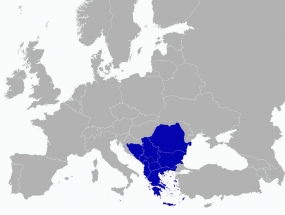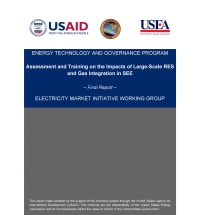Assessment and Training on the Impact of Large-Scale RES Integration in South-East Europe
Client: USEA, USAID
Finishing date: December 2020
Type: Study (Market, Transmission, Generation, Renewable)
Team: Dragana Orlic - Project Manager, Dj. Dobrijevic, B. Lekovic, B. Sijakovic, M. Kostic
The objective of this work was to analyze and quantify the impacts of large-scale RES integration on both the electricity network and market operation in the SEE region, and to prepare the EMI members and regulators to deal with those impacts.
This study included two analyses: first, a study of the changes in the regional electricity market, as the regional markets integrate with a rapidly growing share of RES generation; and second, an assessment of the network impacts of such development, including where congestion may arise and new transmission may be required.
The analysis focused on the target year 2030. Regional market analyses were carried out with Antares software tool providing the impact of large-scale RES integration on wholesale market prices, country balances, cross-border flows and congestion costs. Regional network analyses were carried out with PSS/E software tool and analyzed the impact of large-scale RES integration on the load flows, voltage profiles, secure grid operations and congestions.
In addition to large-scale RES integration in the region, part of the study was dedicated to potential natural gas system development in the region and impact that new gas fired power plants can have on power system operation.
Network and market models (in Antares and PSS/E forms) have been transferred to the EMI participants, with the necessary data and trainings focused on advanced features of these software tools.
Type of services provided:
- Development of the EMI power systems model in Antares sw tool
- Analyses of the system operation in 2030 in different RES Scenarios and additional GAS Scenario
- Implementation of the MonteCarlo simulations for different climatic, hydrological and thermal availability conditions
- Calculation of system operation indicators
- Selection of the relevant operating regimes for grid analyses
- EMI regional transmission network model update
- Load flow calculations and voltage profiles assessment, as well as network loading and security analyses


